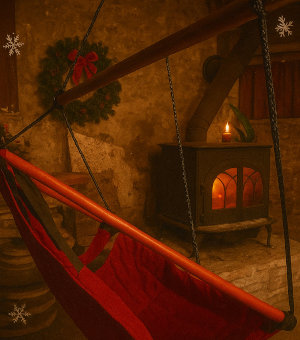Horseback Riding in New York State: Scenic Trails, Ranches, and Riding Adventures

From rolling farmland to Adirondack wilderness, New York State offers a remarkable variety of places to explore on horseback. Whether you're an experienced rider or trying it for the first time, the Empire State has riding trails, ranches, state parks, and guided tours for every skill level.
Why Ride in New York?
New York’s landscapes are incredibly diverse. Riders can experience:
- Mountain trails in the Adirondacks and Catskills
- Beachside riding along Lake Ontario and Long Island
- Open meadows and farmland across Central and Western NY
- Historic bridle paths in downstate preserves
The variety makes horseback riding one of the most memorable ways to experience the state’s natural beauty.
Top Places for Horseback Riding in New York
1. Adirondack Park
The Adirondacks offer miles of forested trails and wilderness loops. Several stables provide guided rides, and experienced riders can explore designated multi-use trails within the park’s vast backcountry.
2. Catskill Mountains
With sweeping overlooks, peaceful woodland paths, and classic Catskill ranches, this region is ideal for scenic day rides and family-friendly outings.
3. Finger Lakes Region
Known for its wineries and lakes, the Finger Lakes is also home to beautiful equestrian centers and rural trail systems. Many stables offer lake-view rides and wine-country horseback tours.
4. Long Island Beaches
Several stables offer seasonal or off-season beach rides — a bucket-list experience made even more magical at sunrise or sunset.
5. Western & Central New York
Wide-open farmland and gently rolling hills make this region perfect for relaxed rides, lessons, and ranch-style adventures.
New York State Parks with Bridle Trails
Many state parks welcome riders and provide marked bridle paths, including:
- Allegany State Park
- Brookfield Trail System (over 100 miles of trails)
- Watkins Glen State Park region (surrounding multi-use networks)
- Letchworth State Park (nearby riding stables)
- Minnewaska and Mohonk Preserve areas*
*Some areas require permits or day passes — check park rules before visiting.
Beginner-Friendly Riding Options
- Guided trail rides at ranches and stables
- Arena lessons for first-time riders
- Pony rides for younger children
- Group or private tours through scenic terrain
What to Expect on a Guided Ride
Most stables provide helmets, safety instructions, and a calm, well-trained horse. Rides typically last 30 minutes to 2 hours, depending on the location and terrain. Closed-toe shoes and long pants are recommended.
Tips for a Great Riding Experience
- Always call ahead or book online — many stables fill up on weekends.
- Bring water and sunscreen, especially during summer rides.
- If riding in autumn, reserve early — fall foliage rides are extremely popular.
- Follow guide instructions for safety and horse comfort.
Supporting New York’s Equine Community
Horseback riding contributes to local businesses, preserves farmland, and supports the state’s equine industry — from boarding barns and trainers to trail groups and tourism organizations.
No matter where you roam, exploring New York State on horseback is an unforgettable way to connect with nature, history, and the beauty of the Empire State's open spaces.

Hemp in New York State

New York State is cultivating the industrial hemp market and supporting new opportunities to grow this multi-million dollar crop, which is used in the manufacture of an estimated 25,000+ products - from clothing and food to building materials and pharmaceuticals.
The Growing Hemp Industry in New York State
Hemp has quietly become one of New York State’s most interesting “new” crops. After being restricted for decades, it is now making a comeback on farms, in factories, and on store shelves across the state. From textiles and building materials to health products and food ingredients, hemp is opening new doors for New York’s rural and urban economies.
From Pilot Projects to a Statewide Program
New York first allowed limited hemp research trials in 2014–2015 under an Industrial Hemp Agricultural Research Pilot Program. What started with just a handful of growers expanded quickly as interest grew in fiber, grain, and CBD varieties of hemp.
Today, hemp production in New York operates under a USDA-approved New York State Hemp Program, administered by the Department of Agriculture and Markets. Anyone who wants to grow or sell hemp seed must hold a state hemp license, and production must meet strict testing and reporting rules— especially for THC levels.
Who Regulates What?
- New York State Department of Agriculture and Markets (NYSDAM)
Oversees hemp cultivation and seed sales. Farmers apply here if they want to grow hemp for fiber, grain, or cannabinoids. - New York State Office of Cannabis Management (OCM)
Regulates cannabinoid hemp products (such as CBD oils, tinctures, and edibles) that are processed, manufactured, or sold to consumers. Businesses in this space must obtain a separate cannabinoid hemp license and meet packaging, testing, and labeling standards.
For travelers and residents, this means that the hemp-based food, wellness, and retail products you see in New York stores come from a tightly regulated system designed to protect both farmers and consumers.
Main Ways Hemp Is Used in New York
1. Fiber: Textiles, Building Materials, and More
Industrial hemp fiber is long, strong, and naturally biodegradable. In New York, fiber hemp is being explored for:
- Textiles and clothing — blended with cotton or other fibers.
- Paper and packaging — an alternative to wood-pulp products.
- Biocomposites and car parts — lightweight panels and molded components.
- “Hempcrete” building blocks — a bio-based construction material with good insulation and carbon-storage potential.
Cornell University and other partners have run multi-year trials on hemp fiber varieties and agronomics across the state, helping farmers figure out which cultivars perform best under New York conditions.
2. Grain & Seed: Food, Feed, and Oil
Hemp grain is rich in protein and healthy fats, making it attractive for both human food and animal feed. Common products include:
- Hemp hearts (shelled seeds) for salads, smoothies, and baking.
- Cold-pressed hemp seed oil used in dressings and cooking.
- Protein powders for shakes and nutrition products.
- Livestock and poultry feed ingredients (in carefully regulated settings).
3. Cannabinoid Hemp (CBD and Related Products)
One of the fastest-growing parts of the hemp industry has been cannabinoid hemp — products that use compounds such as CBD, CBG, and others. These can appear as:
- Tinctures and oils
- Capsules and softgels
- Topical creams, balms, and lotions
- Gummies and other edible products (subject to NY’s specific rules)
Because these products are consumed or used on the body, New York requires processors and retailers to follow detailed rules for testing, labeling, and packaging under the OCM’s Cannabinoid Hemp Program.
Economic Potential
The U.S. industrial hemp market has grown into a multi-billion-dollar sector, with hemp now used in more than 25,000 types of products. Nationally, hemp production value climbed to about $445 million in 2024, reflecting a strong rebound after earlier market turbulence.
For New York, hemp offers an opportunity to:
- Diversify farm income with new rotational crops.
- Support rural processing facilities for fiber and grain.
- Fuel small businesses in wellness, food, and sustainable products.
Hemp and Sustainability
Hemp grows quickly, can be used in many different products, and has the potential to reduce reliance on fossil-fuel-based materials. Farmers often note its dense canopy and deep roots, which can help suppress weeds and improve soil structure when managed well. Researchers in New York continue to explore how hemp fits best into local cropping systems and regional supply chains.
Thinking About Getting Involved?
Anyone interested in growing or processing hemp in New York should carefully review current regulations and licensing requirements, as rules can change over time. The New York State Department of Agriculture and Markets and the Office of Cannabis Management both offer up-to-date guidance, forms, and program details on their official websites.
From upstate fields to city storefronts, hemp is becoming part of New York’s agricultural and economic landscape. It’s a story still being written—and one that visitors and residents alike can watch unfold across the Empire State.
 ...Learn More>>
...Learn More>>Give the Gift of Pure Relaxation This Holiday Season ...The Airchair

Looking for a unique, unforgettable present? An AirChair is the perfect holiday gift—practical, fun, and made for year-round comfort.
Indoors by the fireplace or outdoors under the winter sun, AirChairs create a cozy floating retreat.
They hang easily and fit beautifully into any home, cabin, porch, or studio—no bulky furniture needed.
High-quality materials provide years of safe, smooth swinging and everyday comfort.
Choose a classic look or a casual boho vibe—AirChairs suit any décor.
Featured Models
The Original AirChair — The classic that started it all. Sturdy wood bars and premium fabric deliver unbeatable support and that “sink-in-and-unwind” feeling.
The Rope AirChair — Hand-woven rope construction gives a breathable, flexible seat with a relaxed boho look. Lightweight and comfortable, ideal for both indoor and covered outdoor spaces.

|
Top Reasons to Visit New York State New York State offers a very wide range of activities for various interests groups. Here are just a few to consider. 1) The great outdoors of the Adirondack Region and the Forever Wild Wood Lands with many mountains lakes, rivers and waterfalls for scenic hiking, skiing, horseback riding, atving kayaking and much more year around 2) The scenic and powerful Niagara Falls experience with many surrounding attractions. 3) The historic and modern day exposure of American Baseball and Softball in Cooperstown (Baseball Hall of Fame and museum) and surrounding region. 4) History! New York State has a very rich history of economic development. Hops farming, logging, Erie Canal, historic homes are just a few. 5) New York City! 6) Wineries with the beauty and scenic views. 7) Beaches, with many water ways, lakes and ponds, New York State offers many tranquil views and water related activities form Long Island to the Great Lakes St. Lawrence Seaway. 8) Architecture, history and politics of Albany, the state capital. 9) Soccer Hall of Fame in Oneonta, NY. 10) Old Forge, Lake George and the Blue mountain lake Museum are a fun and relaxing destination. 11) Horse racing at Saratoga Springs! 12) Lake Placid area in the Winter or Summer! |
